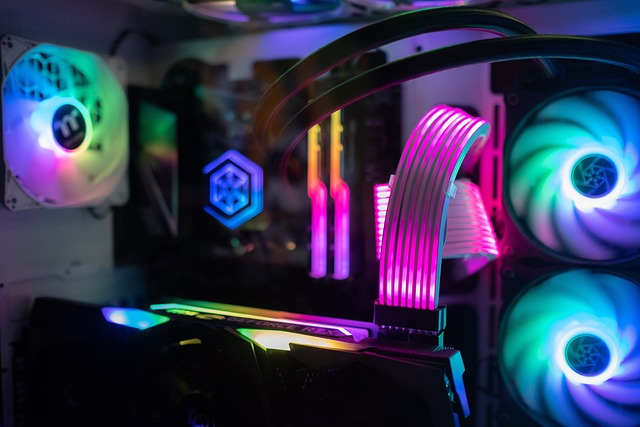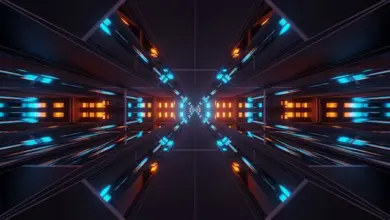
Introduction
In the ever-evolving landscape of modern computing, the Graphics Processing Unit (GPU) has emerged as a critical component far beyond its original purpose of rendering graphics for video games and multimedia. Today, GPUs play a pivotal role in various industries, ranging from artificial intelligence (AI) and machine learning (ML) to scientific simulations and blockchain technologies. Their immense computational power, coupled with parallel processing capabilities, has revolutionized how complex computations are handled, offering a level of efficiency and speed that Central Processing Units (CPUs) often cannot match in certain applications. This article delves deep into the role of GPUs in modern computing, exploring their architecture, functions, and applications across a variety of fields.
The Evolution of GPUs
Early Days: From Graphics to General Computing
Originally, GPUs were developed to offload the graphical rendering workload from CPUs, primarily for video games and graphics-heavy applications. The first commercially successful GPU was NVIDIA’s GeForce 256, introduced in 1999. This GPU was capable of transforming, lighting, and rendering 3D graphics, offering gamers and designers enhanced graphical capabilities. Over time, as the demand for more sophisticated graphics in games and multimedia grew, so did the power and functionality of GPUs.
However, it wasn’t long before researchers and engineers realized that the parallel processing capabilities of GPUs could be harnessed for more than just graphics. Unlike CPUs, which are optimized for sequential tasks, GPUs excel at handling many tasks simultaneously, making them ideal for computationally intensive operations that can be parallelized. This realization led to the rise of General-Purpose Computing on Graphics Processing Units (GPGPU), where GPUs are used to accelerate non-graphics tasks, revolutionizing various domains.
The Rise of CUDA and Parallel Processing
A major milestone in the evolution of GPUs was the introduction of CUDA (Compute Unified Device Architecture) by NVIDIA in 2006. CUDA enabled developers to use the power of GPUs for general-purpose computing, allowing them to write programs in languages like C, C++, and Python that could run directly on the GPU. CUDA allowed for easy access to the parallel processing power of GPUs, fostering a revolution in fields like machine learning, scientific simulations, and high-performance computing (HPC).
Parallel processing, the backbone of GPU architecture, enables thousands of small cores to work together simultaneously, handling many operations at once. This is in contrast to CPUs, which typically have fewer cores optimized for sequential processing. The parallel architecture of GPUs allows them to excel in tasks that require massive amounts of repetitive calculations, such as matrix multiplication, a fundamental operation in machine learning and scientific computations.
GPU Architecture and Functionality
Core Structure
At the heart of a GPU is its highly parallel architecture. GPUs consist of hundreds or even thousands of smaller cores designed to perform simple mathematical operations in parallel. These cores are grouped into “streaming multiprocessors” (SMs), which manage the execution of threads across different cores. Unlike CPU cores, which focus on complex tasks, GPU cores are designed for efficiency in simpler, highly repetitive tasks.
GPUs also come with large memory bandwidth to accommodate the vast amounts of data that need to be processed. The combination of multiple cores and high memory bandwidth makes GPUs extremely powerful for applications requiring fast processing of large datasets.
Memory Hierarchy
GPUs rely on a specialized memory hierarchy to optimize performance. The most common types of memory in GPUs include:
- Global Memory: The largest but slowest type of memory, used to store data for all threads running on the GPU.
- Shared Memory: Faster than global memory, shared memory is accessible by all threads within a single block.
- Registers: The fastest type of memory, registers store data for individual threads.
By optimizing the use of these different memory types, GPUs can handle large volumes of data more efficiently than CPUs, which generally have a simpler memory architecture.
Parallelism: The Key Advantage
The primary advantage of GPUs lies in their ability to perform parallel computations. This is particularly valuable for tasks that can be divided into smaller, independent units of work. For instance, in rendering images or video frames, each pixel can be processed independently, making it an ideal task for a GPU. Similarly, in machine learning, operations on large matrices—such as calculating gradients during the training of neural networks—can be performed in parallel, dramatically speeding up the process.
GPUs are not well-suited for tasks that are inherently sequential, where each step depends on the result of the previous step. In such cases, CPUs, with their optimized pipelines and higher clock speeds for single-threaded tasks, still hold an advantage. However, for workloads that can be parallelized, the GPU’s architecture provides an unmatched level of performance.
Applications of GPUs in Modern Computing
1. Artificial Intelligence and Machine Learning
One of the most significant modern applications of GPUs is in the field of AI and machine learning. Deep learning, a subset of machine learning, involves training large neural networks with vast amounts of data, requiring substantial computational resources. GPUs have become the de facto standard for training deep learning models due to their ability to handle the massive parallelism involved in operations like matrix multiplications and convolutions.
NVIDIA’s GPUs, along with frameworks like TensorFlow and PyTorch, have accelerated research in AI, enabling breakthroughs in natural language processing, computer vision, and reinforcement learning. GPUs significantly reduce the time required to train deep learning models, which could take weeks or months on CPUs alone, making AI development more accessible and efficient.
2. Scientific Simulations
GPUs are also widely used in scientific simulations, including fields like physics, chemistry, and biology. Researchers use GPUs to simulate complex systems such as weather patterns, molecular structures, and the behavior of particles at the atomic level. The parallel processing power of GPUs allows these simulations to run in a fraction of the time required by traditional CPU-based systems.
For example, in molecular dynamics simulations, where the movements of molecules are calculated over time, GPUs can handle the large-scale calculations required for simulating protein folding, drug interactions, and chemical reactions.
3. Cryptocurrency and Blockchain
The rise of cryptocurrencies, such as Bitcoin and Ethereum, has also driven the demand for GPUs. Cryptocurrencies rely on cryptographic algorithms that require vast amounts of computational power to mine new coins and verify transactions on the blockchain. GPUs, with their ability to perform numerous calculations in parallel, are ideally suited for mining operations, particularly for algorithms like Ethereum’s Ethash.
The demand for GPUs in the cryptocurrency sector has led to shortages in the consumer market, with many GPUs being purchased for mining farms. This has raised concerns about the environmental impact of cryptocurrency mining, given the significant energy consumption involved.
4. Gaming and Virtual Reality
While the use of GPUs in fields like AI and scientific computing has garnered significant attention, their original purpose—enhancing the gaming experience—remains a core application. Modern video games rely heavily on GPUs to render complex 3D environments, simulate realistic physics, and process high-quality textures in real-time. The advent of ray tracing technology, powered by GPUs, has pushed the boundaries of realistic lighting and reflections in games.
Virtual reality (VR) and augmented reality (AR) applications also depend on GPUs for real-time rendering of immersive environments. As VR and AR technologies advance, GPUs will play an even more critical role in delivering seamless, high-quality experiences to users.
5. Video Rendering and Editing
For video editing and rendering professionals, GPUs have become indispensable tools. Video rendering, especially in high-resolution formats like 4K and 8K, requires substantial computational power to process frames, apply effects, and encode video. GPU-accelerated rendering tools like Adobe Premiere Pro, DaVinci Resolve, and Blender utilize the parallel processing power of GPUs to significantly reduce the time needed for video editing and rendering tasks.
Future Trends: GPUs and Quantum Computing
As GPUs continue to evolve, they are expected to play a role in bridging the gap between classical and quantum computing. While quantum computing is still in its early stages, hybrid systems that combine classical GPUs with quantum processors could offer significant advantages for solving complex problems that neither technology could handle independently.
Additionally, as AI and machine learning models become more sophisticated, the demand for more powerful GPUs will only increase. The development of next-generation GPUs, with even higher core counts and improved memory architectures, will continue to drive innovation in computing.



